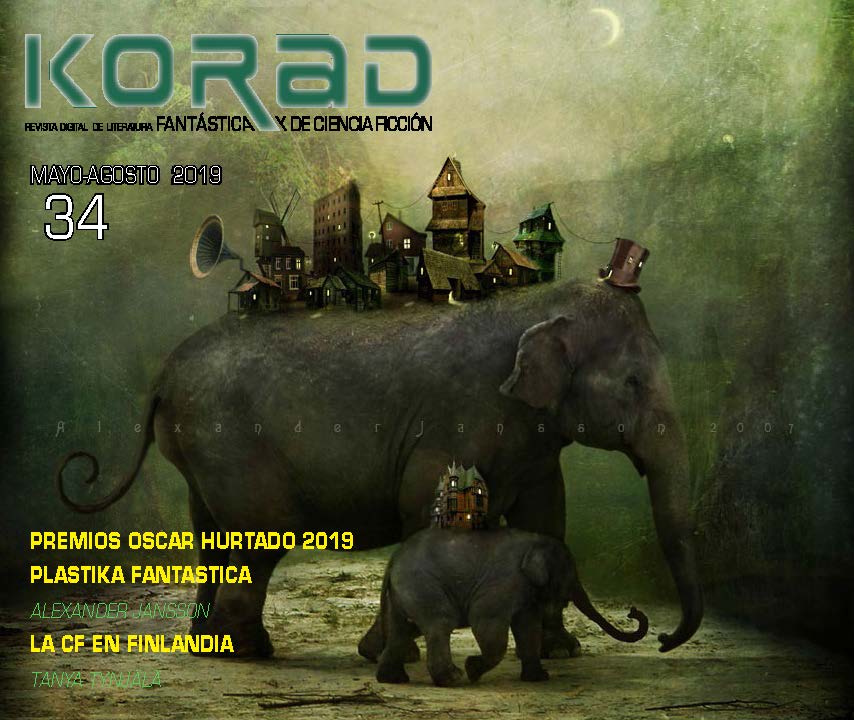Many fans of fantasy & science fiction have dreams of joining the ranks among their favorite authors someday. But as little as five years ago the publishing landscape was much different than it is today. Savvy would-be authors need to keep abreast of the changes in the industry to decide which path is best for them.
Before I go into explaining each of the various paths, it should be noted that there isn’t a single correct route in today’s environments. There are advocates on both sides of the traditional and self-publishing fence, each with valid points, and they’ll proclaim with full-throated conviction that their choice is the only right one. The truth is that many paths are viable, and while there isn’t a single universal winner, there are certainly ones that will best align themselves with an individual author’s goals. There is no one size fits all.
Traditional Big-six Publishing: For decades this has been the gold standard for many authors and while it does offer some advantages, there are some serious deficiencies now that other viable alternatives exist. For the sake of this distinction let’s assume traditional is full-service traditional which means that the publisher will obtain (and produce) rights for print, ebook, and audio. Most traditional publishers will offer an advance (payable in 3 or 4 installments…for example 1/3 at signing, 1/3at manuscript acceptance, and 1/3 at publication) but many first time authors are surprised that advances for debut works are typically $5,000 per book and $10,000 is considered “a good deal.” For works that can take years to produce, this is obviously not a living wage. Current industry standards indicate that only 20% of the books will “earn out” so for most the advance is the only money the author will ever receive. Typical royalty rates for print copies are based on the list price and vary based on format: 10-15% for hard cover, 7.5% for trade paperback, 8.0% for mass market paperback. Digital media (audio and ebooks) typically receive a royalty based on net price (the amount the publisher makes) and the industry standard is 25%. So for digital copies the division is 30% to the retailer, 52.5% to the polisher and 17.5% to the author.
Digital Only Publishing: With the explosion of ebooks many publishers (of all sizes) have started digital only imprints. Even large publishers such as Harper Voyager (fantasy/science fiction imprint of Harper Collins) are opening ebook only imprints. In November 2012, Random House announced the formation of three digital only imprints including Hydra, which will produce science fiction & fantasy works. In general the digital-only publishers are not offering advances, and the ebook royalty varies from publisher to publisher (25% – 50% of net). Services vary with digital only publishers, all will provide cover design and formatting, but many are not providing editing or proofing and merely publishing the books “as is.” I’m actually going to discuss Digital only publishing in more detail in an upcoming article as there is a number of factors to consider with this choice.
Amazon Imprint Publishing: Amazon has entered the publishing industry with a number of imprints, including 47North for science fiction and fantasy. When I refer to Amazon Imprint, I’m not speaking of self-publishing through their CreateSpace or their Kindle Direct Publishing (KDP) programs, I’m speaking of their traditional publishing arms that are curating content and publishing traditionally. So why break them out separately? A few reasons. First, books published by Amazon imprints won’t generally find their way onto bookstores shelves. Barnes & Noble, Books-a-Million, and many independent bookstores refuse to carry any title put out by Amazon because they don’t want to contribute to their own demise by providing income to an organization that they see as the biggest threat to their survival. On the flip side, Amazon is extremely good at using its platform to get its titles noticed. Amazon has done a great job getting attention to titles they produce and this offsets the non-Amazon sales.
Independent (Small Press) Publishing: Technically, any book not produced by one of the big-six falls into the category of an “independent” publisher, and they includes many larger publishers with millions of dollars of annual revenue. Recently the term “indie” has been usurped by self-publishing authors so there is often confusion when using this term. For the sake of this discussion, I’m referring to publishers that use a traditional model (no fees paid by the author) and generally have small (or no) press runs for their books. Most small presses offer no advance (or a very modest $1,000-$2,000) and many rely on print-on-demand technology to produce the paper versions of their books (and therefore may have little or no bookstore presence) . Like the digital-only publishers some do not offer editing and this should be a consideration when signing. In my opinion, if an author is going to give up a significant portion of a book’s profit, then the publisher should be providing the editing as part of their investment in the project, otherwise why not just go self-published? Besides editing, the other consideration any author considering this option should be concerned with is pricing and Amazon ranks. Small presses whose titles are ranked 200,000+ aren’t moving any books. At a minimum they should have several titles whose kindle versions are 10,000 or less. The really successful small presses have at least some books ranked at 2,000 or less.
Self Publishing: Historically self-publishing was the last resort for authors who found all other doors closed, but that is not the case these days. In fact, when considering the mid-list the self-published authors are actually earning more than their traditional published counterparts and there are even those that have turned away six-figure contracts offered by big publishers. For most of 2012 50% of Amazon’s Top Epic Fantasy titles for the kindle are from self-published authors.
DIY Self Publishing: Do-it-yourself (DIY) self-publishing is when the author assumes the role of the publisher and either hires, or does for themselves, all the aspects of a books production. This includes copy editing, cover design, formatting, and making books available to various distribution channels such as Amazon, Barnes and Noble, and Apple’s ibookstore. To me, if you are going to go the self-published route this is the best way to do so. Not only do you get 100% of the profit but you have complete control over important aspects such as cover and price. Because DIY-ers receive significantly more of the book’s sales price (70% if priced from $2.99 – $9.99) versus 17.5% if traditionally published) self-publishing has become the preferred choice for many author/entrepreneurs.
Self Publishing Services: Historically known as vanity publishing, this option utilizes a third-party company to take a manuscript and perform the production and distribution of the final product. Generally the author submits a manuscript, selects a package of services (at various price points), and then receives a royalty for any books sold. Companies such as Xlibris, Lulu, iUniverse have typically been the major players in this marketplace. Of all the publishing choices, I think this is the worst option. If the author is willing to assume the financial start-up capital to produce a book, then it makes sense to recoup 100% of the profit. This model is very profitable for the service provider (who makes the bulk o their income from fees paid by the author than from income generated from book sales), but a terrible one for the author. Recently, the high profits of this option has attracted the big-six publishers, and there have been reports of misrepresentation. Penguin has recently purchased Author Solutions (which had previously consolidated most of the major players) and Simon & Schuster has announced Archway (which interestingly enough uses Author Solutions services). It’s too early to know exactly how these companies will “spin” their offerings, but self-publishing with a company owned by Penguin is not the same as being signed to a Penguin contract and authors should take special care. Bottom line, if the author is being asked to contribute money…it’s self-publishing.
So there you have it. Six different options for authors to turn a manuscript into a product and possible income producer. As little as five years ago only big-six traditional publishing offered any chance of producing income sufficient enough to produce full-time employment. With the changes in distribution and advances in technology there are now more viable options than ever before. It truly is a great time to be a writer.










Another informative read. Although I never serious considered Self-Publishing services, I was surprised to read of Penguin's interest. And it's interesting to see how fluid the situation is. I take it that the adage "Where there's chaos, there's opportunity," has some merit.
There certainly is plenty of both (chaos and opportunity) right now. I think it is really important for authors to keep up on what their options are.
Penguin's move will be interesting to see how it plays out. Whether they will dilute their brand or just milk it for the money cow it is, is difficult to say. In any case I'll be watching.